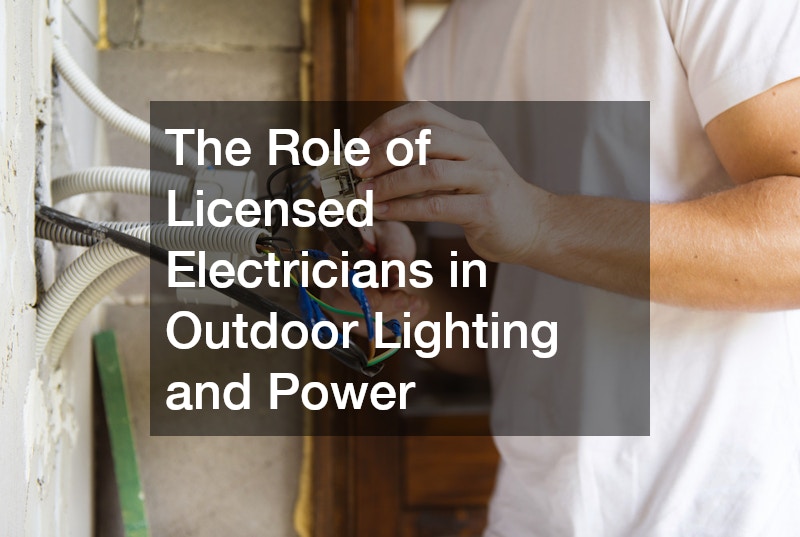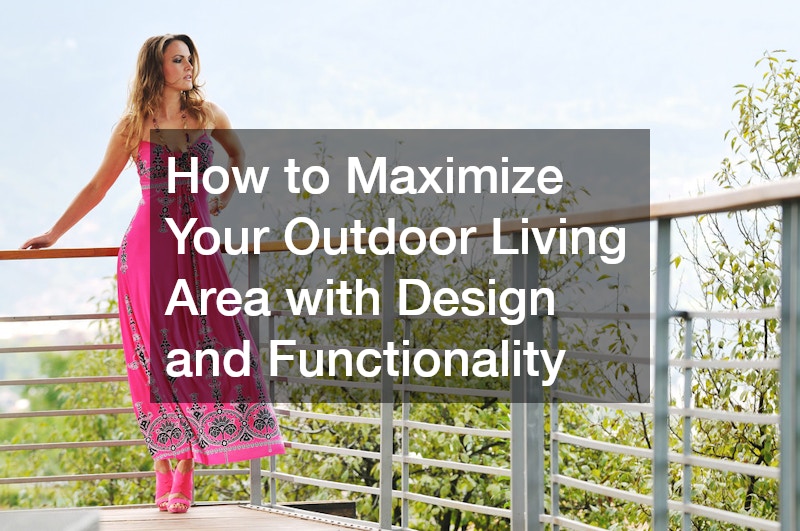In today’s home design landscape, outdoor living areas are no longer just an afterthought. With an increasing number of homeowners recognizing the value of their outdoor spaces, transforming these areas into comfortable, functional, and aesthetically pleasing environments has become a priority. According to a recent study by the American Society of Landscape Architects (ASLA), over 63% of homeowners are investing in their outdoor spaces, enhancing both their home’s curb appeal and its overall value. These outdoor areas are no longer just for grilling in the summer; they are becoming extensions of indoor living spaces that foster relaxation, recreation, and social interaction.
Whether you want to create a serene retreat, an entertaining hub, or a multifunctional outdoor living space, knowing how to maximize outdoor area design and functionality can significantly improve the quality of life for you and your family. By utilizing the right elements, such as professional landscaping, hardscaping, lighting, and various outdoor amenities, you can elevate your space and ensure it meets your needs for years to come.
This guide will walk you through the key elements that contribute to a functional and stylish outdoor living area, including design tips, professional services, and the best materials for long-lasting beauty and usability, all aimed to maximize outdoor area potential.
1. Hiring Landscape Designers for a Cohesive Plan
One of the first steps in maximizing your outdoor space is to hire a landscape designer. While DIY landscaping might seem like an option, working with a professional designer can help bring your vision to life and ensure that all the elements of your space work together cohesively. A landscape designer takes into account your property’s size, shape, and natural features, along with your lifestyle and design preferences, to create a layout that will enhance your outdoor living experience.
Landscape designers help integrate your outdoor elements, such as plantings, pathways, seating areas, and focal points, into a unified design. They also have the expertise to select plants that thrive in your region and climate, ensuring a low-maintenance and sustainable outdoor space. Furthermore, they can provide advice on how to incorporate features like lighting, water features, and hardscaping to create zones that suit different activities—whether it’s an alfresco dining area, a cozy lounge, or a kid-friendly play zone.
When hiring a landscape designer, be sure to clearly communicate your needs and vision for the space. You might want to create separate zones for dining, relaxing, and entertaining. Ask the designer to consider your future needs, such as potential changes to the layout or adding new elements over time. A good designer will ensure that all the areas flow naturally and complement each other, creating an inviting, balanced environment.
2. Adding Shade and Style
A pergola is an excellent way to enhance your outdoor living area by providing both functional shade and visual appeal. As a structure with a lattice roof, a pergola adds a layer of sophistication while creating an ideal spot for relaxation or outdoor dining. Not only does it offer shelter from the sun, but it can also provide a stylish frame for your garden or outdoor furniture.
By choosing the right pergola installation services, you can create a shaded area that protects you from UV rays while allowing for plenty of airflow—ideal for hot summer days. A pergola also serves as a support for climbing plants or vines, adding a natural and lush aesthetic to your outdoor space.
When installing a pergola, choose materials that will complement your home’s architecture. For example, a wooden pergola might work well with a traditional home, while a sleek, metal frame could suit a modern design. Be sure to have a professional install the structure to ensure it is properly anchored and provides adequate shade. You can also add features like retractable canopies, lighting, or curtains to increase its versatility and comfort.
3. Working with a Landscape Stone Supplier for Durable Hardscaping
Hardscaping is an essential part of maximizing the functionality and design of your outdoor space. Materials like stone, brick, and pavers are used to create functional elements such as patios, walkways, retaining walls, and borders. A landscape stone supplier provides a wide variety of options that can help define the aesthetic of your outdoor area while providing durability and ease of maintenance.
Stone is one of the most durable and low-maintenance materials for outdoor use. It can be used for a variety of applications, including pathways, patios, and outdoor fireplaces. Stone is also highly versatile, offering a range of textures, colors, and shapes that can complement any design style.
When selecting stone for your outdoor area, work with a landscape stone supplier to choose materials that match your design preferences and the overall aesthetic of your home. Natural stones such as slate, limestone, and granite are durable and provide a timeless, rustic look. Be sure to choose the right type of stone for the area—flagstone is a great choice for walkways and patios, while granite or marble can be ideal for outdoor countertops.
4. Incorporating Outdoor Water Features for Relaxation and Aesthetic Appeal
An outdoor water feature, such as a fountain, pond, or waterfall, can transform any outdoor space by adding both a soothing soundscape and visual interest. The sound of flowing water creates a peaceful atmosphere, perfect for relaxation and unwinding. Moreover, water features can become the focal point of your outdoor design, drawing attention to key areas of your landscape.
Outdoor water features create a tranquil, resort-like atmosphere in your own backyard. The sound of water flowing can drown out unwanted noise from traffic or neighbors, creating a peaceful retreat. Additionally, water features serve as an attractive addition to any garden or outdoor area, adding visual appeal and attracting wildlife.
Consider placing your water feature near seating areas, pathways, or other focal points, where the sound can be enjoyed. Work with a professional to ensure the installation is done correctly, with appropriate drainage and proper water flow. Additionally, be mindful of the size of the feature—too large and it can overwhelm the space, too small and it may not have the desired effect. Small ponds, cascading fountains, or wall-mounted waterfalls are all great options for various spaces.
5. The Role of Licensed Electricians in Outdoor Lighting and Power

One of the best ways to extend the usability of your outdoor living area is through outdoor lighting. Licensed electricians can install outdoor lighting safely, ensuring that all fixtures are properly connected and compliant with local electrical codes. Lighting not only enhances the safety and security of your outdoor space but also helps set the mood for evening gatherings.
Outdoor lighting serves many purposes: it illuminates pathways, highlights key features, and provides ambient lighting for gatherings. A licensed electrician can ensure that your lighting is both safe and functional, and they can also help you create the right lighting plan for your space, from overhead lights to accent lighting.
Work with an electrician to install a combination of task, accent, and ambient lighting. For example, use path lights to illuminate walkways, string lights or sconces for dining areas, and spotlights to highlight features like trees or sculptures. Solar-powered lights are an energy-efficient option for pathways, while LED lights provide a long-lasting, low-energy solution for outdoor use. Be sure to discuss your specific needs with the electrician to design an effective and beautiful lighting scheme.
6. Creating the Ultimate Cooking Space
An outdoor kitchen is an investment that adds both functionality and entertainment value to your outdoor living space. Outdoor kitchens allow you to cook, eat, and socialize all in one area, creating a seamless flow between indoor and outdoor living. Whether you enjoy grilling or want to take your cooking to the next level with a full range of outdoor appliances, a dedicated outdoor kitchen space can elevate your experience.
Outdoor kitchen contractors specialize in creating fully functional cooking spaces that include everything from built-in grills to sinks, countertops, and storage. They can help you design a space that fits your cooking style and makes the most of your outdoor space. These contractors are also skilled in using weather-resistant materials that can withstand the elements.
When working with an outdoor kitchen contractor, think about your specific cooking needs. Do you need a built-in grill, a pizza oven, or a wet bar? A professional contractor can design a layout that optimizes space and ensures that all appliances are properly installed. Be sure to choose durable materials such as stainless steel for appliances and granite for countertops to ensure longevity and easy maintenance.
7. Durable and Elegant Choices for Outdoor Kitchens
In an outdoor kitchen, stone countertops are the ideal choice for both durability and style. Materials like granite, quartzite, and marble are heat-resistant, weather-resistant, and provide a high-end aesthetic that elevates any outdoor cooking area.
Stone countertops are not only durable and functional but also add a touch of elegance to your outdoor space. They can withstand the wear and tear of outdoor cooking, from hot pots and pans to spills and stains, while also providing a beautiful surface for meal prep and serving.
When choosing stone for your outdoor kitchen countertops, opt for materials that are specifically suited for outdoor use. Granite and quartzite are great options because they are resistant to heat, moisture, and UV rays. Be sure to choose a material that complements your outdoor design and fits your functional needs.
8. Choosing the Right Kitchen Cabinets for Outdoor Kitchens
Durable, weather-resistant kitchen cabinets are essential in outdoor kitchens. Outdoor cabinetry ensures that your utensils, cookware, and appliances are stored safely and securely, without worrying about damage from the elements.
Outdoor cabinets are designed to withstand the harsh elements, such as moisture and temperature fluctuations. They help keep your outdoor kitchen organized and ensure that everything you need is within arm’s reach.
Look for cabinets made from marine-grade polymer or stainless steel for maximum durability and weather resistance. Modular storage systems work well for smaller spaces, while larger areas can benefit from custom-built cabinetry. Make sure the cabinetry is sealed to prevent water damage and that it’s designed for easy cleaning.
9. A Must-Have for Culinary Enjoyment

No outdoor kitchen is complete without the perfect outdoor grill. Whether you prefer gas, charcoal, or a combination of both, an outdoor grill allows you to enjoy delicious meals in the fresh air while socializing with friends and family.
An outdoor grill is the centerpiece of most outdoor kitchens. It allows you to prepare meals outdoors and serves as a focal point for gatherings. Whether you enjoy grilling burgers, steaks, or vegetables, having a dedicated outdoor cooking space makes entertaining easier and more enjoyable.
When choosing an outdoor grill, think about your cooking needs and preferences. Gas grills offer convenience and control, while charcoal grills provide a traditional, smoky flavor. For more advanced cooking, consider a built-in grill with additional features like side burners, a rotisserie, or a smoker.
10. Creating a Resort-Like Retreat

An in-ground pool can transform your backyard into a resort-like retreat, offering a space for relaxation, exercise, and socializing with family and friends. Whether you prefer a traditional rectangular pool or a more creative design, such as a freeform pool, the options are endless when it comes to designing a pool that fits your lifestyle.
In ground pools provide both recreational value and aesthetic appeal, making them a great addition to any outdoor space. Beyond their enjoyment factor, they can also significantly increase the value of your property, turning your backyard into a true oasis.
When planning your in-ground pool, consider the type that best suits your needs. Lap pools are ideal for fitness enthusiasts, while freeform or infinity pools offer a more natural, relaxed feel. Don’t forget to enhance the pool area with features such as decking, lighting, and landscaping to complement the design and create a cohesive outdoor environment.
Maximizing the design and functionality of your outdoor living area requires careful planning, the right professional help, and the selection of durable, high-quality materials. Whether you’re installing a pergola, designing an outdoor kitchen, or adding a pool, each element should work together to create a seamless and inviting space.
By following the actionable tips outlined in this guide and working with the right professionals, you can transform your outdoor space into a versatile, functional, and stylish area that enhances your quality of life and adds long-term value to your home. Whether you’re hosting a family barbecue, enjoying a peaceful evening under the stars, or cooling off in your in-ground pool, your outdoor space will become an integral part of your home that can be enjoyed year-round.


